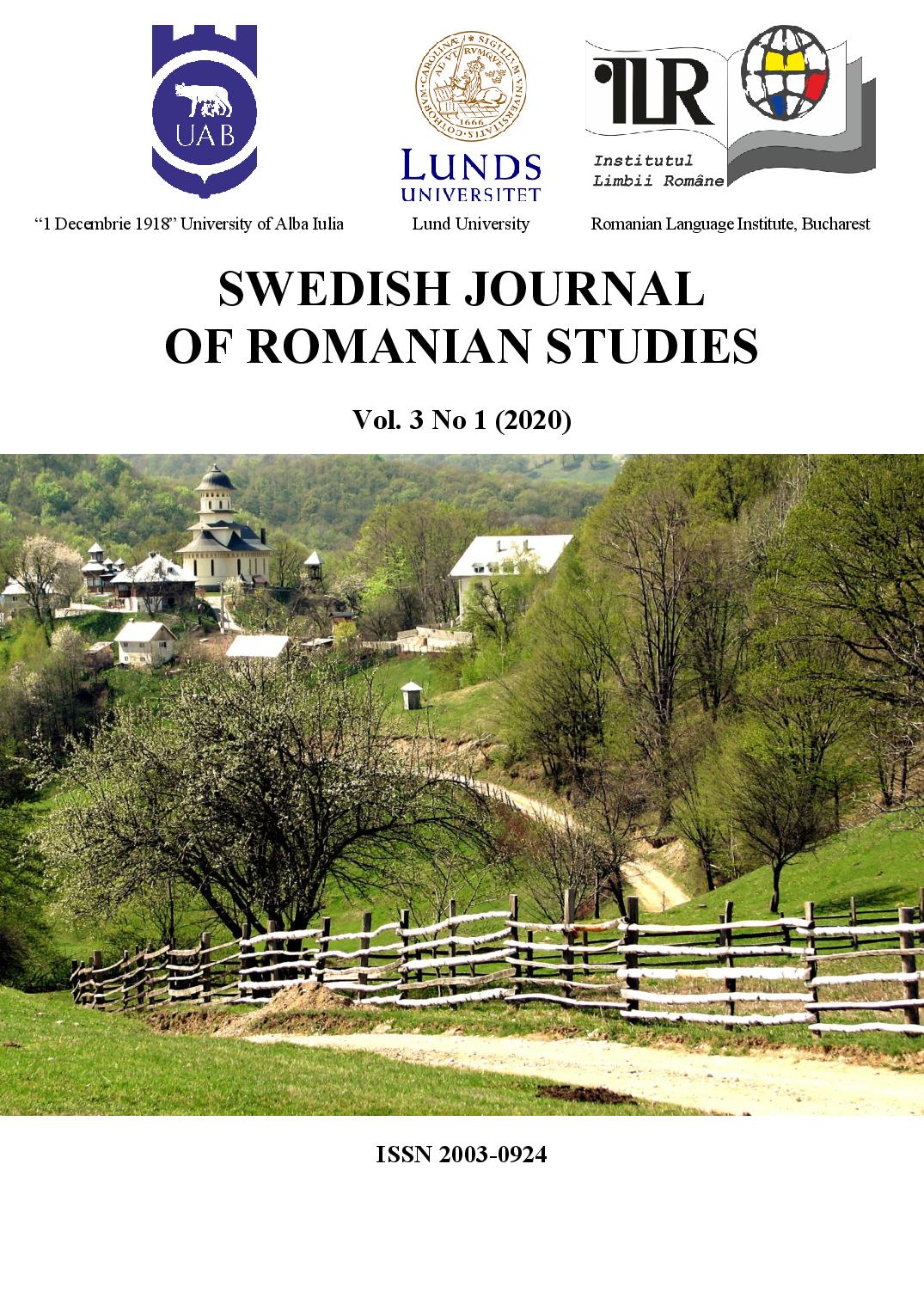Francis Bacon, Jan Baptist Van Helmont and Demetrius Cantemir. Family resemblances of auctoritas in Early Modern Europe
DOI:
https://doi.org/10.35824/sjrs.v3i1.21465Keywords:
Francis Bacon; Jan Baptist Van Helmont; Demetrius Cantemir; cultural epidemiology of representations; auctoritas; family resemblances; Early Modern Europe; polymaths; corridors of knowledge; Republic of Letters;Abstract
The present paper stakes out the destiny of certain ideas on scientific methods and epistemic and ontological representations that spread in 17th century Europe like a cultural epidemiology of representations against a deist, theosophical, empiricist and occult maze-like background. Our intellectual history study evaluates the family resemblances of auctoritas of three polymaths: Francis Bacon, Jan Baptist Van Helmont and Demetrius Cantemir along the cultural corridors of knowledge. If Francis Bacon was a theoretical founder of doctrines and Jan Baptist Van Helmont was a complex experimenting spirit, Demetrius Cantemir was an able disseminator of philosophy in South Eastern Europe and a creative synthetic spirit bridging the Divan ideas of Western and Eastern minds caught up in the busy exchange of ideas of the Republic of Letters.
References
Aristotle (1963). Metaphysica. In The Works of Aristotle. 8 vols. 2nd ed. Oxford: Clarendon Press.
Alexandrescu, V. (2003). “Un manuscrit inédit et inconnu de Démètre Cantemir. L’Epître dédicatoire du traité Sacro-sanctae scientiae indepingibilis imago/ “An unpublished and unknown manuscript by Demetrius Cantemir. The dedication epistle of the treatise Sacro-sanctae scientiae indepingibilis imago. In ARCHAEVS. Etudes d’histoire des religions, VII (2003) 3-4, pp. 245-269. București.
Bacon, F. (2000). Novum Organum, Cambridge: Cambridge University Press.
Bădărău, D. (1964). Filozofia lui Dimitrie Cantemir/Demetrius Cantemir’s Philosophy. București: Editura Academiei Române
Bouchard, J. (2006). Nicolae Mavrocordat. Domn și cărturar al iluminismului timpuriu/Nicholas Mavrocordat. Prince and Scholar of Enlightenment (1680-1730). București: Editura Omonia.
Cantemir, D. (1872). Operele Principelui D. Cantemir/The Works of Demetrius Cantemir. București: Editura Academiei Române.
Cantemir, D. (2015). Metafizica/ Metaphysics. București: Editura Acum Info.
Debus, A.G. (2002). The Chemical Philosophy: Paracelsian Science and Medicine in the Sixteenth and Seventeenth Centuries. Dover: Courier Dover Publications.
Ducheyne, S. (2006). Joan Baptista Van Helmont and the Question of Experimental Modernism. Gent. Abstracts of the 6th Int. Conf. for the History of Chemistry. pp.18-18
Halleux, R., (1983). Helmontiana/ Helmontiana. Mededelingen van de Koninklijke Academie voor Wetenschappen, Letteren en Schone Kunsten van Belgie¨/ “Papers of the Royal Academy for Sciences, Letters and Fine Arts of Belgium”. Academia Analecta, Klasse der Wetenschappen, 45 (3). Brussels. pp. 33-63.
Hannam, J. (2017). God’s Philosophers. London: Icon Books.
Lemny, Ș. (2010). Cantemireștii. Aventura europeană a unei familii princiare din secolul al XVIII-lea/ The Cantemirs. The European Adventure of a Princely Family. Iași: Editura Polirom.
Ploeșteanu, G. (2007). Receptarea operei si a personalității lui Dimitrie Cantemir în Europa/ The Reception of Demetrius Cantemir’s Works and Personality. Târgu Mureș: Editura Veritas.
Redgrove, H.S., Redgrove, I.M.L. (1922). Joannes Baptista Van Helmont. London: William Rider & Sons.
Sperber, D. (1996). Explaining Culture. A Naturalistic Approach. Oxford: Blackwell.
Van Helmont, J.B.(1664). Works, Containing His Most Excellent Philosophy, Chirgury, Physick, Anatomy. Wherein The Philosophy of Schools is Examined, their Errors Refuted and the Whole Body of Physick REFORMED and RECTIFIED. Being a New Rise and Progresse for PHILOSOPHY and MEDICINE, for the Cure of Diseases and the Lengthening of Life. London.
Wittgenstein, L. (1953). Philosophical Investigations. Cambridge: Cambridge University Press.
Downloads
Published
How to Cite
Issue
Section
License
Copyright (c) 2020 Sorin Ciutacu

This work is licensed under a Creative Commons Attribution-NonCommercial 4.0 International License.
Authors who publish with this journal agree to the following terms:
a. Authors retain copyright and grant the journal right of first publication with the work simultaneously licensed under a Creative Commons Attribution-NonCommercial 4.0 International License that allows others to share the work with an acknowledgement of the work's authorship and initial publication in this journal.
b. Authors are able to enter into separate, additional contractual arrangements for the non-exclusive distribution of the journal's published version of the work (e.g., post it to an institutional repository or publish it in a book), with an acknowledgement of its initial publication in this journal.
c. Authors are permitted and encouraged to post their work online (e.g., in institutional repositories or on their website) prior to and during the submission process, as it can lead to productive exchanges, as well as earlier and greater citation of published work (See The Effect of Open Access).

